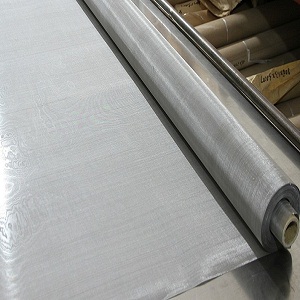
Tungsten Mesh in the Industry
Tungsten mesh has covered a long distance in providing reliable performance as furnace heating elements in the mid of 19s. It is more durable than steel elements and offers larger watt density as compare to rod heating elements.
The maximum service temperature offered by tungsten mesh is above 3000oC therefore it is capable for service at the elevated temperatures.
Tungsten heating elements serve in the way similar to incandescent light bulb. A 100 watt light bulb operates at 2200oC. The tungsten mesh utilizes the heat element for example in a furnace at 2200oC, the heating element will glow as 100 watt bulb offering light intensity.
Material Choice
Tungsten offers the maximum melting point and smallest vapor pressure of all metals and high resistance to several chemicals. Tungsten is a refractory material, both in use and during production.
Several material fabrications are done with the metal heated for forming that needs special handling in welding. The welding is performed in a glovebox with tungsten inert gas that is also called as a gas tungsten arc welding system. The problem in welding tungsten is that a tungsten electrode is used so the welder requires to keep the electrode from becoming part of the element. Other welding techniques are also utilized, like electron beam and laser.
Mesh heating elements
In the tungsten mesh heating elements, the heating wires are wound around a mandrel to produce concentric wire coils. The coils are woven to produce the mesh that enables the element to withstand the multiple heat cycles without distortion, so these elements generally have a prolong long life length. The magnitude of surface area offers the element good watt density that is a factor of the complete surface area of the wires utilized in the element. The larger surface area offers higher watt density.
The elements are custom designed for every application. Resistance is a design factor that can be modified to increase efficiency. The power leads and peak and bottom bands are also major factors in design. The tungsten mesh can be produced in round or flat panel and they can be produced for single or triple phase power service. Several heating elements install vertically, however few function in the horizontal direction. The position of element is a crucial design factor. The heating elements are normally installed by liquid-cooled power feedthroughs. On the base of use, the voltage is kept below 50 volts. Smaller voltage decreases the danger of arcing and plasma effect, particularly if the device is operating in partial gas pressure.
The resistance and heat loss specifies the real wire size and design of the mesh. The element and power supply require to be matched for an efficient service. Following the general rule, the elements operate on small voltage and high amperage.
Another design factor includes how the element is needed to be supported. Big elements may have several power pins whilst small element for three phase application would consist of three power pins.
Ultra clean Heating
Tungsten wire mesh heating elements can help ceramic manufacturers fire their products efficiently. The heating elements are the prime choice for an ultra-clean heating source in controlled atmosphere operations.
